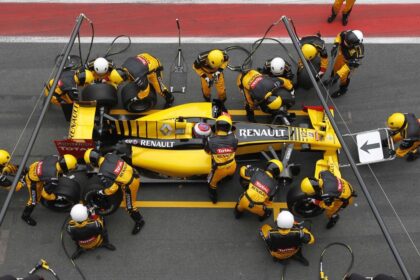
During the course of my career I have had the good opportunity to work with some excellent bosses who were brilliant in the way they were able to get the best out of their teams by aligning them towards a clear goal or strategy…I was also fortunate to pick up lot of key skills during the said period of high achievement and learning.
I have also had the good fortune to build up teams from scratch on several times, turn around teams which were given 3 to 6 months’ time to last and a few times downsize great performing teams for reasons beyond my control and business logic…Each and every one has been a great learning experience and leaves a lasting mark on you..
I have also observed extremely successful superiors who always work with a select successful core team ..So wherever the leader goes he takes those key lieutenants also along whether it is change to a new vertical or a group company or a totally new organization. The said superiors have been extremely successful so am sure there is a secret success recipe in this type of management also…
Have also seen great captains in the sporting field get an average looking team to bind together as a single unit and perform with unimaginable levels of success…
Which brings us to the basic question of How do we get great teams to perform … How do individuals with totally different backgrounds and skill sets join together to deliver amazing results…is there a method which could be used to get this done…
This brought me to Bruce Tuckman’s model from 1965 that talks about the journey great teams go through to perform at their peak “Forming-storming-norming-performing-adjourning” which is as shown below:

#1 Forming Stage
The first stage of team development is forming, which is a lot like orientation day at college or a new job. As the group starts to familiarize themselves, roles and responsibilities will begin to form. It is important for team members to develop relationships and understand what part each person plays. But, because this stage focuses more on the people than on the work, your team probably won’t be very productive yet.
#2 Storming Stage
In the storming stage, the reality and weight of completing the task at hand have now hit everyone. The initial feelings of excitement and the need to be polite have likely worn off.
Members might disagree over how to complete a task or voice their concerns if they feel that someone isn’t pulling their weight. They may even question the authority or guidance of group leaders. Some teams skip over the storming stage or try to avoid conflict at whatever cost.
#3 Norming Stage
During the norming stage, people start to notice and appreciate their team members’ strengths. Groups start to settle into a groove. Everyone is contributing and working as a cohesive unit. Of course, you may still think that your tech guy’s choice in music is obnoxious. But you also admire his knowledge of web design and coding skills, and value his opinions on anything tech-related.
#4 Performing Stage
In the performing stage, members are confident, motivated and familiar enough with the goals Everyone is on the same page and driving full speed ahead towards the final goal. The fourth stage is the one that all groups strive to reach. Yet, some do not make it. They usually fail to overcome conflict and can’t work together. But when they do, this is when the team reaches its peak and achieves the team objectives. This is when team energy and synergy is at its highest and members come together as one to achieve success.
Arguments happen, but this is more like brother and sister quarrels where no one from outside can dare critique the team. This friction is actually good as I will touch on later …
Bonding activities other than the task at hand are critical, a team that plays together works better together. Cohesiveness as a team is built on trust and understanding of each other and this mostly is built outside the workplace.
#5 Adjourning Stage
This happens when the team disbands either because the project is completed or there are changes within the organisation. It is also called the mourning stage and the team is almost reluctant to disband and disperse. But it is essential to do this when an objective is realised.
Celebration of success is also critical as is review of lessons learnt. Especially if this is a team that is going to be sustained for further projects, the celebration and recognition by leadership is also key to make them perform even better next time.
Maintenance and further growth of High-performance teams
Should a team have achieved the goal set out for them keeping stability is paramount. This is not an easy task with today’s roles where people are part of multiple teams. The idea of a stable team is NOT to continue to restart this process over and over. Rather, keep the team together and build onto the existing relationship to perform even better over time.
Teams that are together for a longer duration learn together faster. This is the result of the kinsman-ship of trust and understanding that is created. When trust exists on a team, the speed of learning accelerates.
Google studied this and the #1 factor in creating “high-performing teams” is having psychological safety on the team and this is provided by Stability. Good Teams often try to work on too many things simultaneously or rather get loaded by the management on many things simultaneously. The result is that work may not get completed due to any number of reasons. Being used to being super achievers this builds lot of pressure on the team and can lead to them slipping from the Performing Stage.
So how do we identify what is the maximum load that can be loaded on a super performing team…
1.The say do ratio
That’s the ratio of things you say you will do to the things you follow through on and do. In a perfect world, your say/do ratio is 1:1, meaning you have done everything that you said you would do
The Say vs. Do ratio helps you get a percentage of what was done compared to way was estimated. While your goal is 1:1 (or 100%), its often a telling story if the team under-achieves or over-achieves this ratio. Moreover, this number, along with the velocity, can help balance how much additional work can be loaded to a super performing team
2. The A3 Process
The A3 is a process to methodically solve problems and to continuously improve a system. It was first created by Toyota and is called an “A3” due to that the results should fit on an A3-sized sheet of paper.
The A3 has 7 sections Based on W. Edward Deming’s Plan, Do, Check, Act process. The first 4 sections align with “Plan” and helps the team clarify the problem, define the goal, and articulate the root case. The next section provides an outline to create countermeasures (“Do”). These are experiments that can be done to help remedy the problem. Confirmation, where results are tracked (“Check”). Like a well-formed experiment, this is a good place to connect each countermeasure with a hypothesis and metric BEFORE the experiment is started. After completion of the experiment, its a good practice to track actual results in this section too. Finally, the seventh section represent the actions to take (“Act”). It’s the section where the adjustments based on the results of the A3.
3.Adjust to Overflow and Finishing Early
a. Adjust to Overflow
These teams work on projects that are “complex”. This is when the understanding of a solution is unclear (what to solve) and/or the implementation of the solution (how to solve) is less known.
If you work in a complex work environment, add an interrupt buffer to respond to the condition of variability in your work. And be sure that buffer is balanced between work needed to be done and ensuring customer value is reached. The team creates the buffer percentage to be allocated for unplanned work.
b. Finish Early
Teams often try to work on too many things simultaneously. The result is that work may not get completed as per the plan due to any number of reasons. Teams that take on too much work or underestimate their work leads to bottlenecks getting built up, the output flow slows down. So instead of trying to complete more by starting more, teams and management should look to reduce your workload to what can be finished
In today’s scenario teams go through the said phases again and again… there is this new concept of agile teams too but the team dynamics and this model still holds strong, As the market dynamics keep changing and that too changing dramatically and at a very fast pace very often due to things which are not in the teams control like market disruptors, regulatory changes etc high performance teams also have to be nurtured and led well to ensure that they continue to stay in the high performance zone.
This reminds me about a story from childhood which Steve Jobs used to quote very often about Friction being good… Stevie Jobs had an 80-year widowed neighbour who was so grumpy that none of the other children would go anywhere near him.
But Steve had a good relationship with him as he had moved his lawn a few times. So, one day this neighbour showed Young Steve a rock tumbler and they collected some very hard rocks and put it in the rock tumbler along with some abrasives too and started the tumbler which worked on a motor.
The neighbour told Steve to come back the next day morning. When Steve arrived the next day, the neighbour switched off the tumbler which was running full day and dropped into Steve’s hand very finely polished smooth stones.
Steve Jobs used to quote this as an example of a high-performance team when efficient individuals come together to achieve a common goal. Though there might be frictions along the way the result, this is normal of a high-performance team and will always result in the best output.



